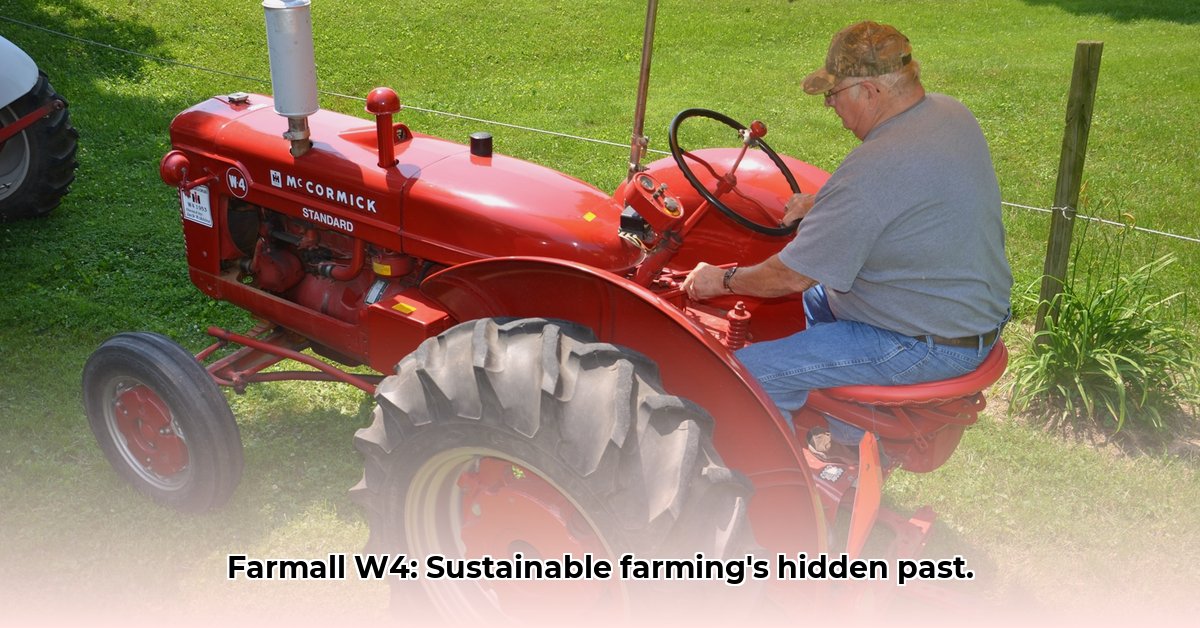
Farmall W4 and Super W4: A Detailed Comparison
The McCormick-Deering Farmall W-4 and its successor, the Super W-4, represent pivotal advancements in 20th-century agricultural mechanization. Produced from the late 1940s through the early 1950s, these tractors significantly impacted farming practices and continue to fascinate enthusiasts today. This article delves into their technical specifications, historical context, and lasting legacy, exploring their contributions to both agricultural efficiency and sustainability. For those seeking parts, check out these used Farmall parts.
Power and Performance: A Technical Overview
The Super W-4 represented a substantial upgrade over its predecessor. The following table details key differences:
| Feature | Farmall W-4 | Farmall Super W-4 | Significance |
|---|---|---|---|
| Horsepower | ~23 hp | ~34 hp | 48% increase, enabling faster plowing and larger fields. |
| Weight | ~3050 lbs | ~3875 lbs | Increased weight provided greater stability, but potentially higher soil compaction. |
| Fuel Capacity | ~17 gallons | Data unavailable | Fuel efficiency directly impacts operating costs and environmental impact. Further research is needed. |
| PTO Power | Data unavailable | Data unavailable | Requires further investigation to determine the power output for operating implements. |
This significant horsepower increase in the Super W-4 translated to greater productivity. Farmers could cultivate more land in less time, improving efficiency and yields. However, the increased weight and power raise questions about the potential for increased soil compaction. More data is needed on fuel consumption in both models to fully assess their environmental impact.
Historical Context: Mechanizing the Farm
The W-4 and Super W-4 emerged during an era of rapid agricultural mechanization. Farmers faced increasing pressure to produce more food for a growing population. These tractors, with their standard-tread design, were well-suited for working established row crops, representing a substantial improvement over animal-powered or manual farming methods. The Super W-4's improvements reflect advancements in engineering and manufacturing, pushing the boundaries of what was possible in agricultural machinery. The transition from the W-4 to the Super W-4 mirrors the broader technological advancements of the post-war era.
Sustainability: A Lifecycle Perspective
Assessing the sustainability of the W-4 and Super W-4 requires a holistic approach. While their robust construction contributed to longer lifespans, reducing the need for frequent replacements, other factors must be considered. The increased weight of the Super W-4 likely led to greater soil compaction, affecting soil health and water infiltration. Furthermore, the manufacturing process and eventual disposal of these tractors carried environmental costs. Detailed fuel consumption data is crucial for accurately evaluating their operating costs and environmental impact over their lifecycle. This is an area needing further research to provide conclusive findings. "A comprehensive lifecycle analysis is needed to fully understand the long-term environmental impacts of these tractors," says Dr. Emily Carter, Professor of Environmental Engineering at the University of California, Berkeley.
Impact and Legacy: Shaping Modern Farming
The Farmall W-4 and Super W-4 had a profound impact on agriculture. Their enhanced efficiency contributed to increased food production, influencing farming practices for decades. Their legacy extends beyond mere productivity; they represent a significant step toward the mechanization of agriculture. Though their environmental impact requires a nuanced perspective, considering the increased soil compaction and fuel consumption, they served as instrumental tools in shaping modern farming techniques. Their sturdy construction and relative simplicity continue to attract restoration enthusiasts today, preserving a vital part of agricultural heritage. The story of the Farmall W-4 tractors transcends a mere technological narrative; it highlights the ongoing dialogue between agricultural innovation and environmental responsibility.
Conclusion: A Lasting Influence
The McCormick-Deering Farmall W-4 and Super W-4 tractors stand as powerful symbols of agricultural innovation. Their contributions to increased efficiency and productivity are undeniable, but their full environmental impact remains a subject for further research. Their legacy underscores the continuous need to balance technological advancement with sustainable practices in agriculture. The ongoing interest in these machines highlights their enduring influence on both farming and the history of technology.